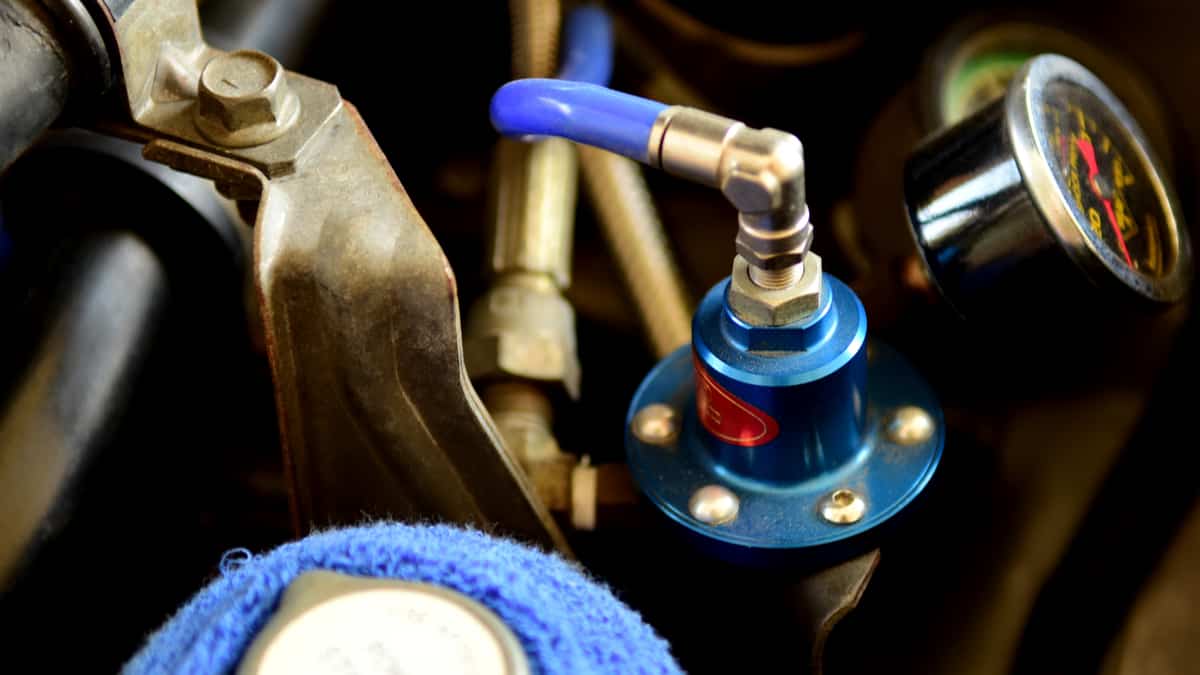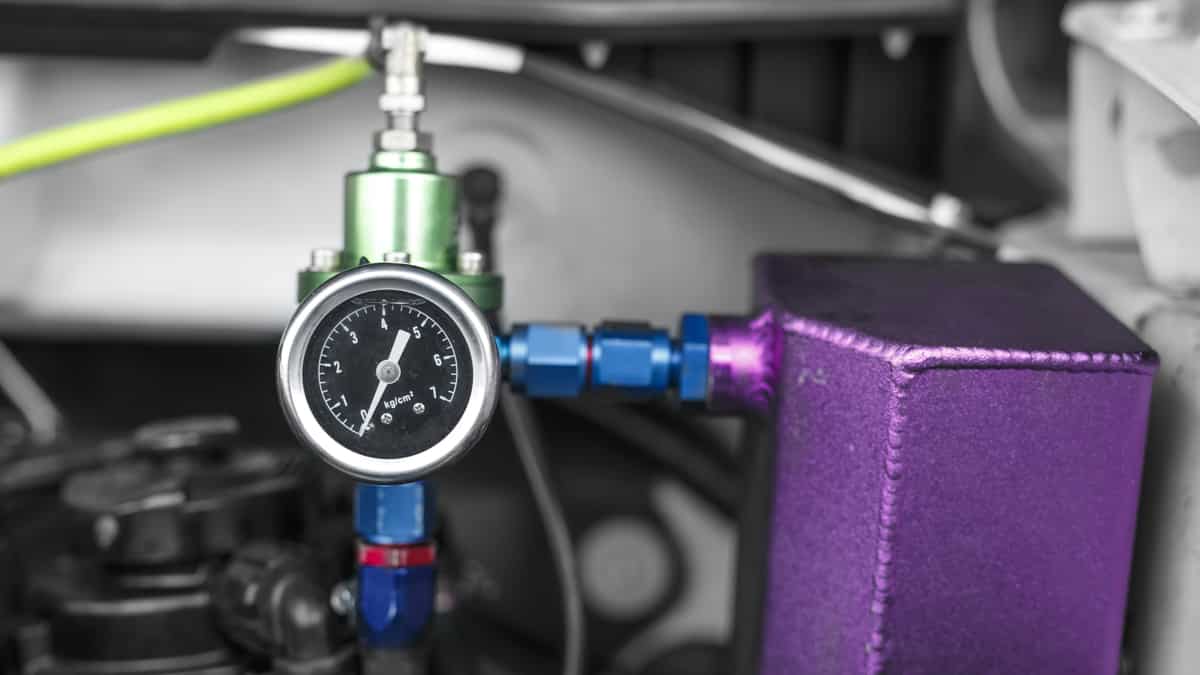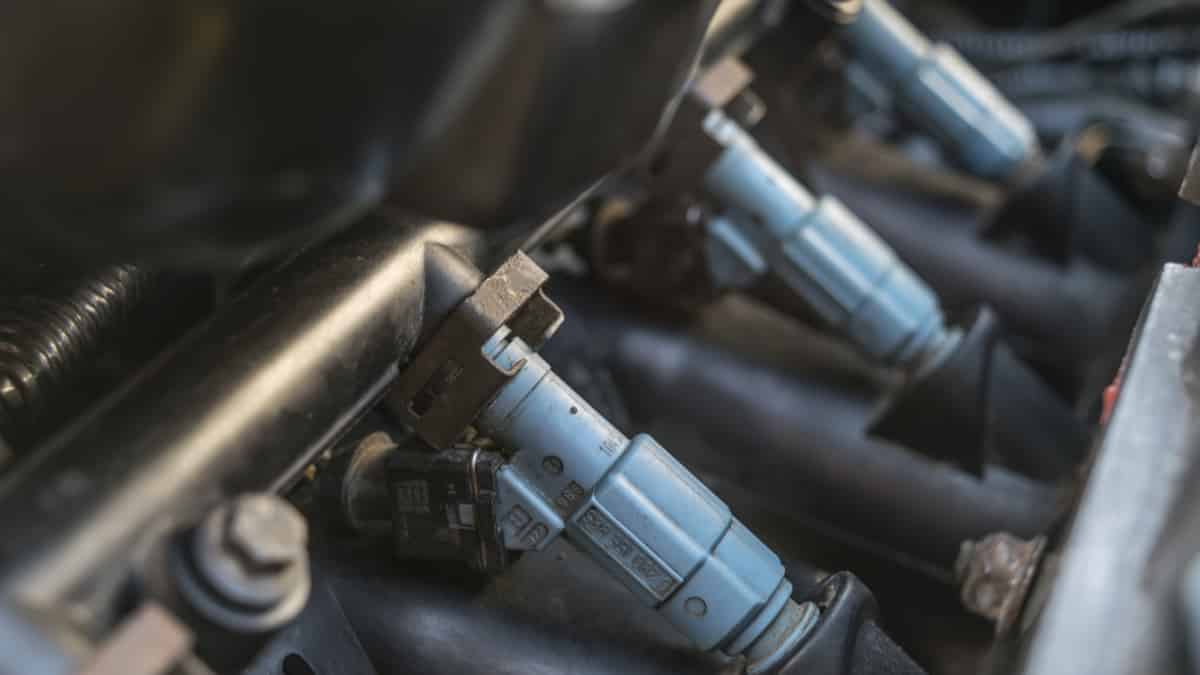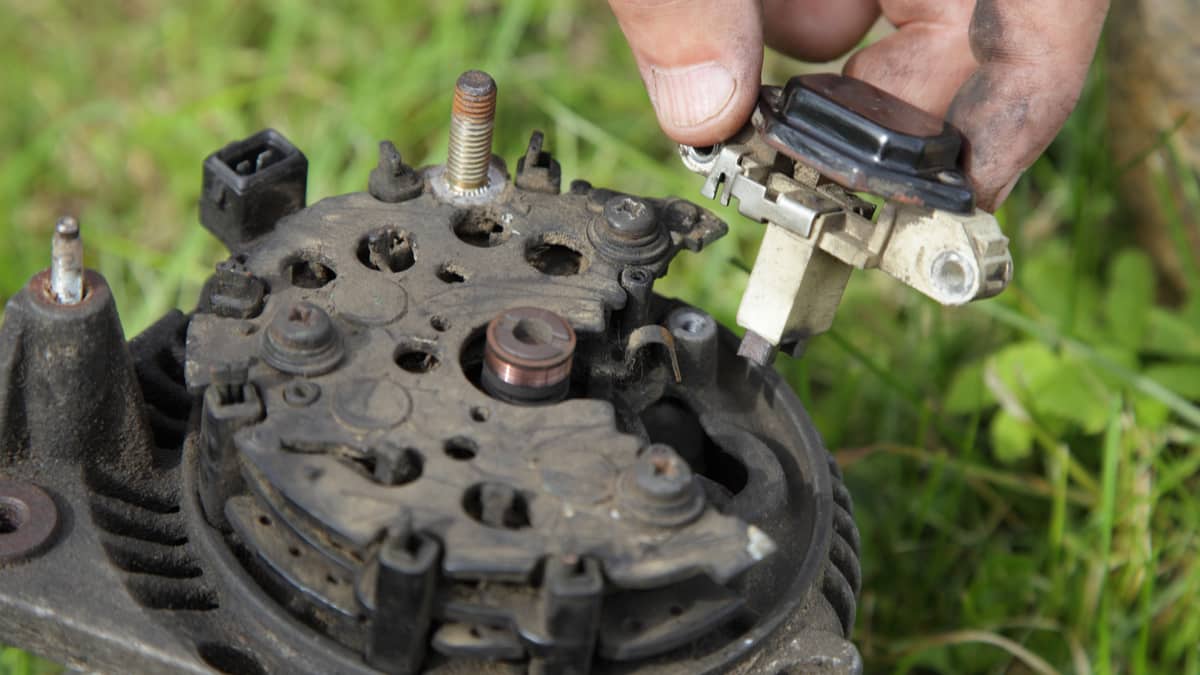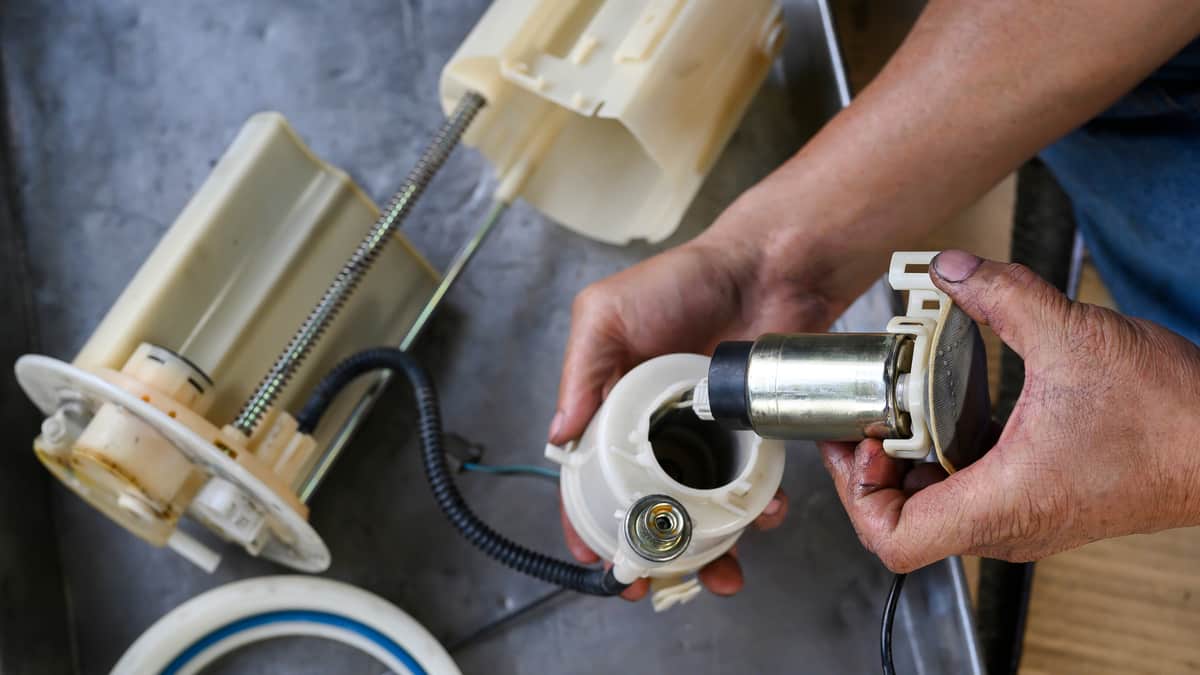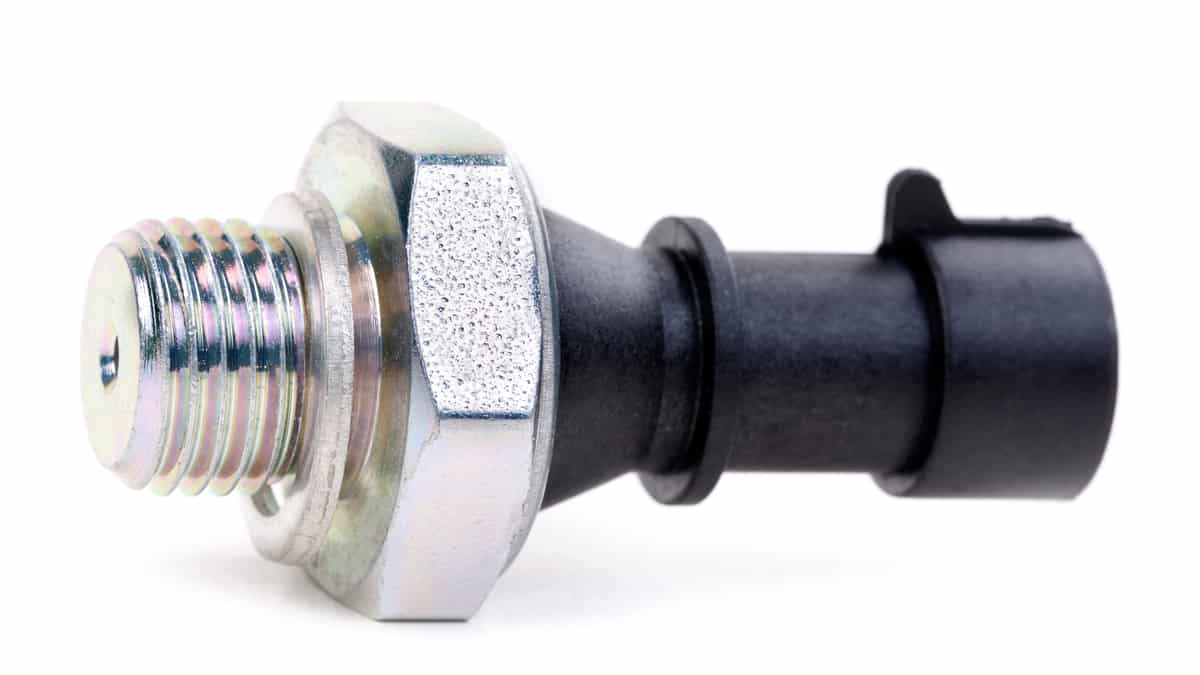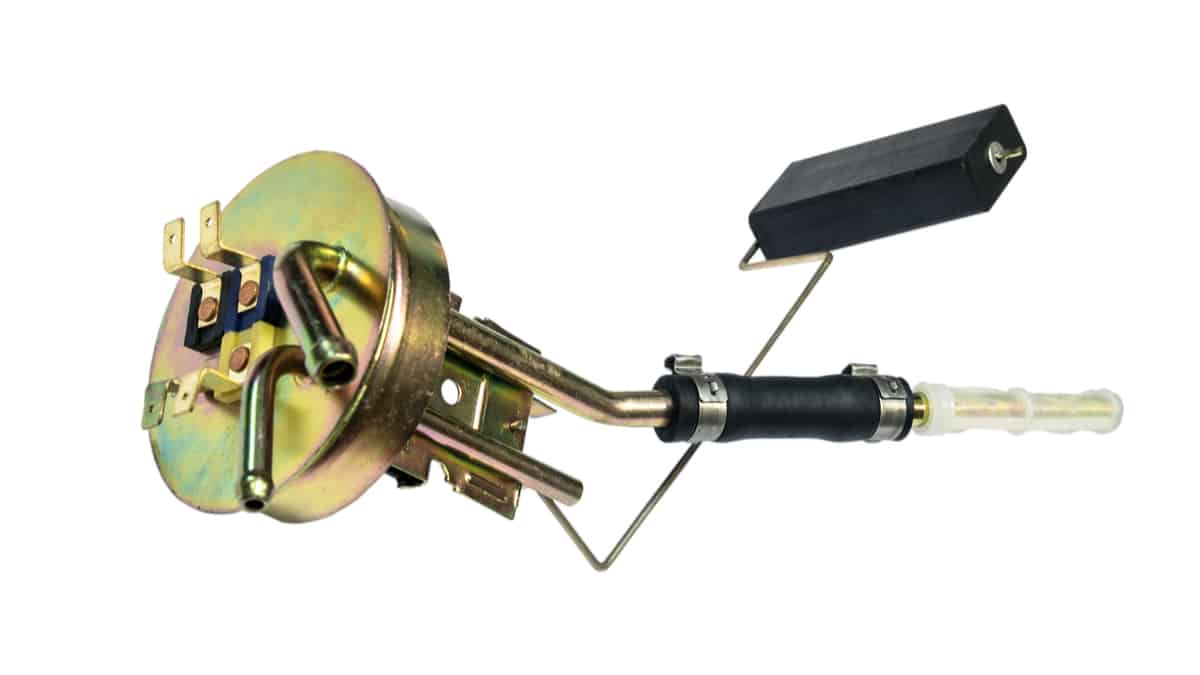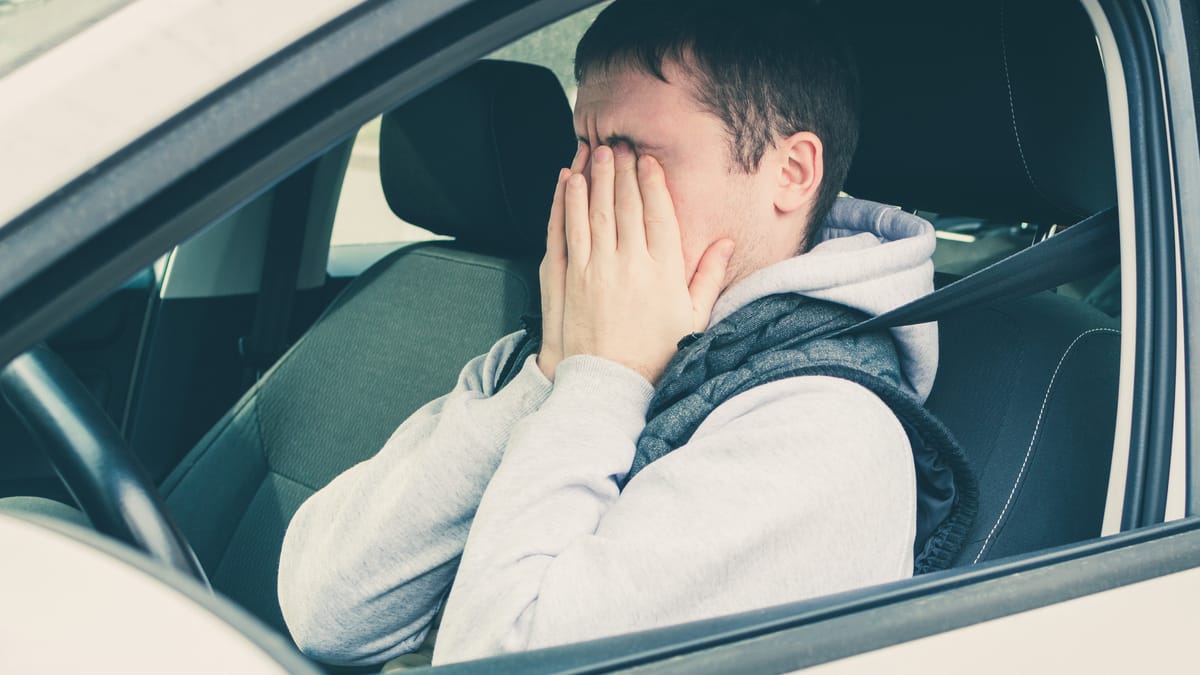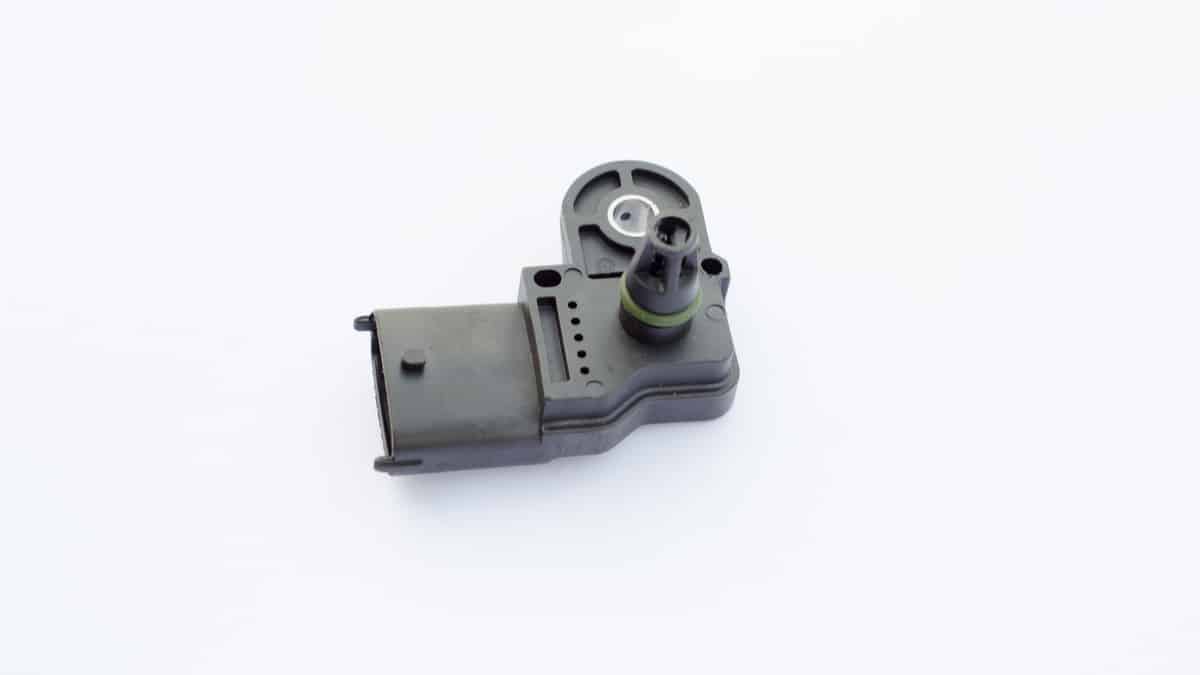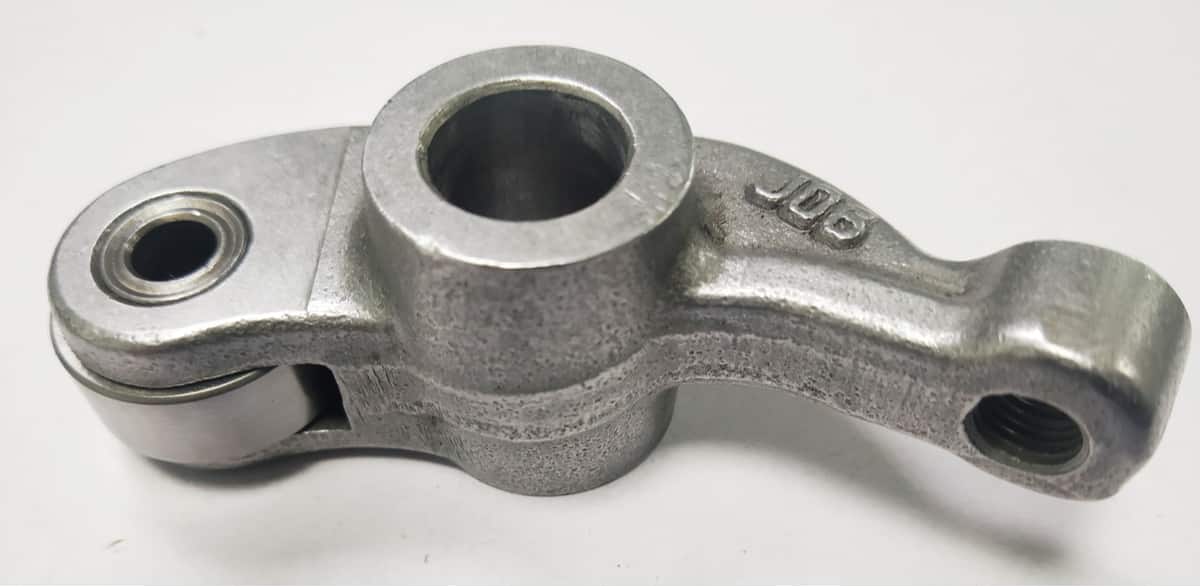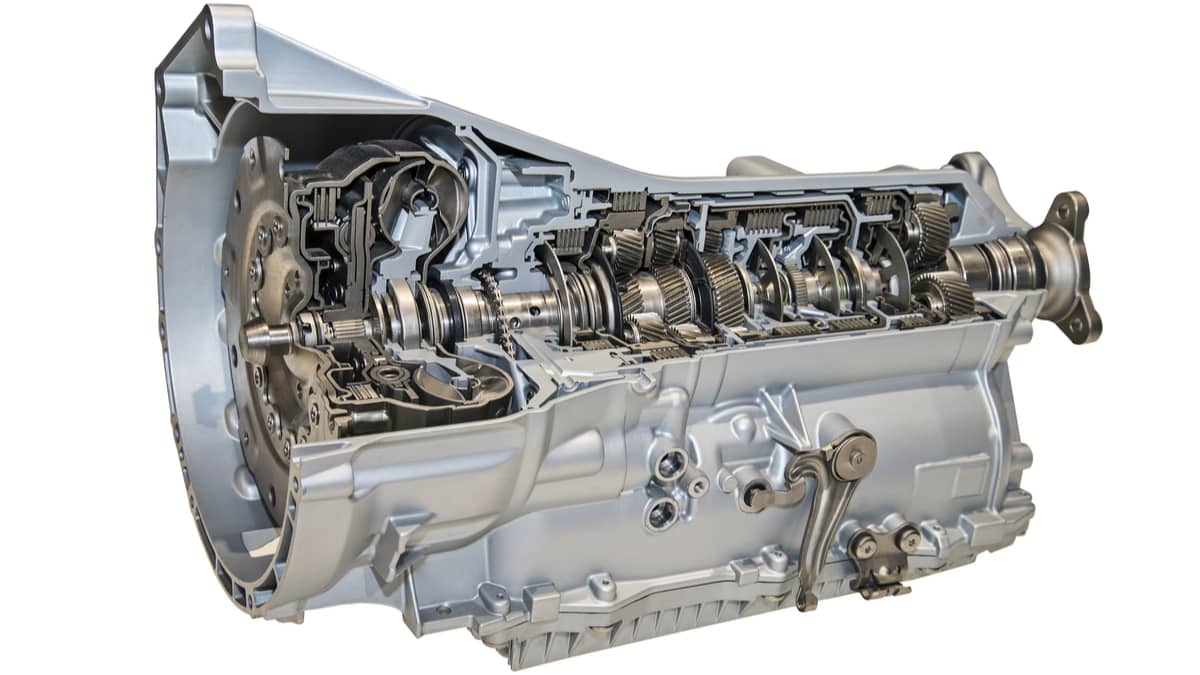A faulty fuel pressure regulator is a ubiquitous part that causes many engine problems. But luckily, it’s usually not an advanced part to replace, so you can often do it yourself.
The fuel pressure regulator controls the fuel pressure in your car’s fuel rail, so a faulty fuel regulator means the air-fuel mixture will be disturbed and the engine will not produce enough power.
This article will teach you the most common symptoms of a bad fuel rail pressure regulator, its location, and how to replace it. I will also talk about how much it will cost to replace it. Let’s start by taking a quick look at the signs you should be looking for.
Symptoms Of A Bad Fuel Pressure Regulator
The most common symptoms of a bad fuel pressure regulator are a misfiring engine and a check engine light on your dashboard. You may also notice issues like decreased engine performance, fuel leakage, and black smoke coming from the exhaust pipe.
Here is a more detailed list of the most common signs of a bad fuel pressure regulator to look for:
1. Engine Misfires
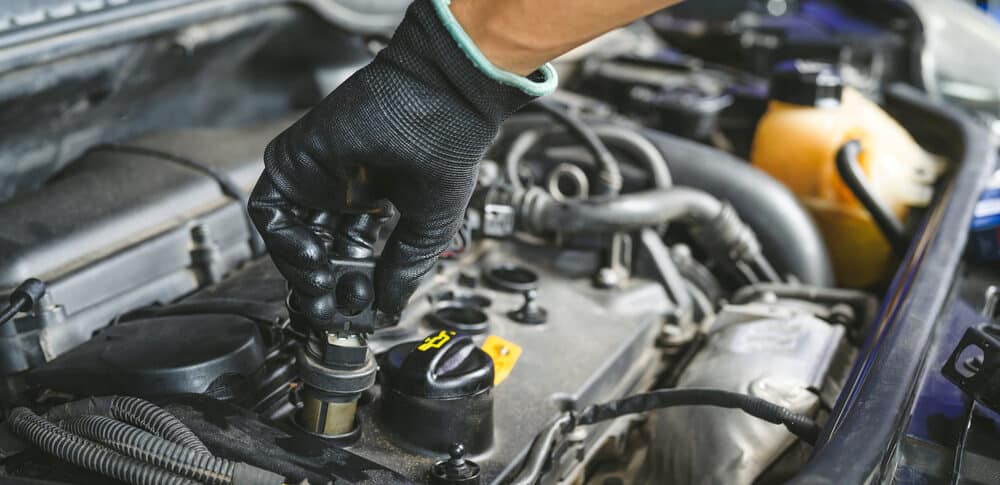
One of the most common symptoms you will notice when your fuel pressure regulator is bad is that your engine will misfire on idle or during acceleration.
Fortunately, misfires are fairly easy to spot. If you hear the engine sputtering or not sounding like normal when you accelerate, you could be hearing a misfiring engine.
However, misfires can also be caused by a lot of other things, so you shouldn’t just replace the fuel regulator as soon as you notice misfires. You need to make a proper diagnosis first.
READ MORE: 6 Symptoms of an Engine Misfire (& 7 Common Causes)
2. Loss in Acceleration

The fuel regulator controls the fuel pressure, and if the fuel pressure is incorrect, the engine’s fuel pressure will be too high or too low. An incorrect fuel pressure causes the air-fuel ratio in your car engine to be either too rich or too lean, depending on the pressure.
The engine needs a correct air-fuel mixture to function properly. Both too lean and too rich air-fuel mixture will cause a drop in acceleration. Therefore, if your car feels slower than before, it could be a problem with the fuel pressure regulator.
READ MORE: Car Losing Power When Accelerating? (Here’re the Causes)
3. Check Engine Light
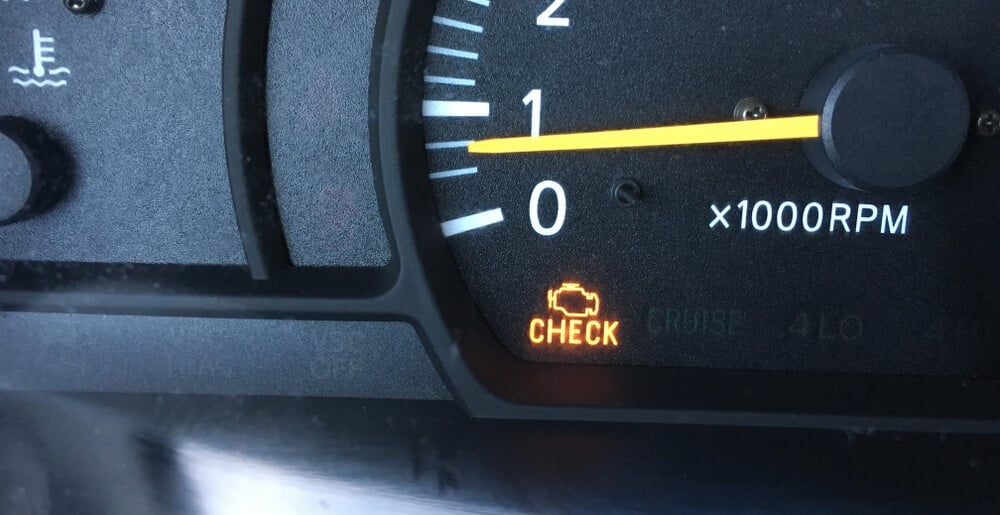
Almost all modern cars use a full-time monitoring system to monitor the car engine’s sensors constantly. If one of these sensors fails, a trouble code will be stored in the engine control module’s trouble code memory, and if this happens repeatedly, the check engine light will appear on your dashboard.
Most car models have a fuel pressure sensor that controls the fuel pressure in the fuel rail. If the fuel regulator is broken and the fuel pressure becomes too high or too low, the check engine light will appear on your dashboard.
4. Fuel Leakage
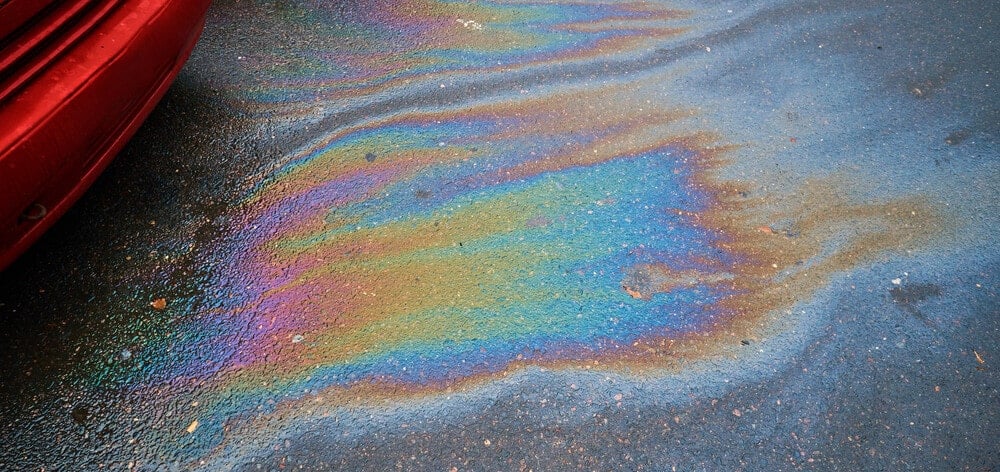
Another common symptom when the fuel pressure regulator goes bad is fuel leakage, which causes performance problems and leads to bad smells. A fuel leak occurs when the fuel regulator diaphragm or outer seal is damaged and broken.
Fuel leaks are also very dangerous, as they can cause your car to catch fire. If you have a fuel leak, you should attend to it immediately.
5. Black Smoke from the Exhaust Pipe

Many people think that only diesel engines will get black smoke from the exhaust, but it can actually happen to gasoline engines too if the air-fuel mixture is too rich. As we discussed earlier, a bad fuel pressure regulator can cause a rich air-fuel mixture. This means that black smoke from the exhaust can be a sign of a bad fuel pressure regulator.
Black smoke coming out of your car’s exhaust can have various other causes, but if you see black or gray color exhaust smoke and also notice other symptoms mentioned in this article, the problem is very likely with the fuel regulator.
6. Spark Plug Covered with Black Debris
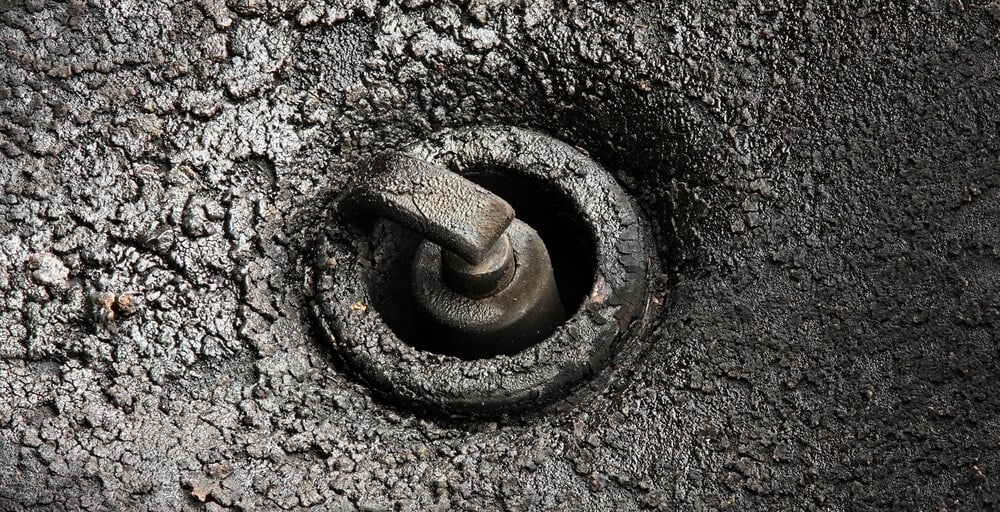
If your engine is running too rich as a result of a faulty fuel pressure regulator, there is a significant risk of your combustion chamber becoming full of soot.
If you are about to change the spark plugs and notice that the end of the spark plugs are completely black and full of soot, it is a sign that your engine is running rich. It is also a sign that the fuel pressure regulator is bad, and you may need to replace both the fuel pressure regulator and the spark plugs.
RELATED: Fouled Spark Plug – Symptoms, Causes & How to Fix
7. Engine Backfires
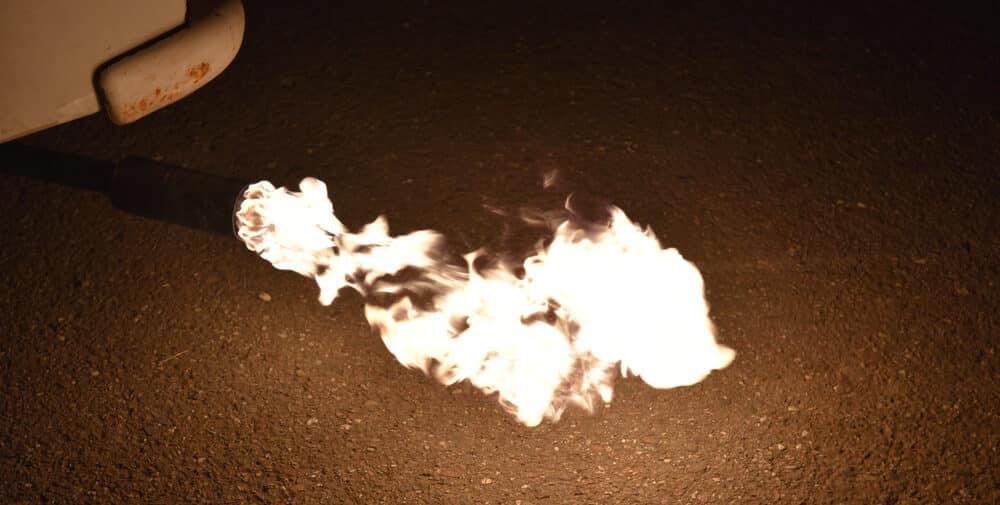
A faulty fuel pressure regulator will cause excess fuel to flow through the combustion chamber. The engine will not be able to burn it all, and the exhaust system will be overfilled with fuel.
The fuel will then flow into a hot exhaust system, which will ignite and cause an explosion of all the unburnt fuel in the exhaust system. This is quite dangerous. It can cause your exhaust pipe to explode and your car to catch fire. Therefore, it is important to get it fixed as soon as possible.
8. Vacuum Hose filled with gasoline

A defective fuel pressure regulator diaphragm can cause fuel pressure to enter the vacuum system instead of the engine. This will cause the vacuum hoses and the intake manifold to become filled with gasoline.
To check this, remove the vacuum hose connection to the fuel pressure regulator and check for gasoline in the line. If so, you most likely have a faulty fuel pressure regulator.
9. Gasoline Smell from the Dipstick

As we discussed earlier, a bad fuel pressure regulator can cause the engine to run rich. Also, an engine that runs rich for a long time will cause unburned fuel to flow into the oil pan and fill it with gasoline.
To check this, you have to lift the engine oil dipstick and check the oil level, and if you can smell or can see gasoline on the dipstick, it can mean that your fuel pressure regulator has a problem.
10. Drop in Mileage

Improper fuel pressure can not only cause a rich mixture, but it can also cause a lean air-fuel mixture. While you may think that a drop in mileage might be helpful, it can actually seriously damage your car engine over time.
A lean mixture will often cause your car to drop in acceleration as well, but you might only notice a drop in mileage.
Fuel Pressure Regulator Location
The most common location for the fuel pressure regulator is at one end of the fuel rail, which is usually located under or near the intake manifold. However, the location varies depending on the car model; some may even have it in the fuel tank.
If you know where the fuel injectors are in your car, you’ll want to look there. Both the fuel injectors and the fuel pressure regulator are usually attached to the fuel rail.
How to Test a Fuel Pressure Regulator?
The best way to check a fuel pressure regulator’s function is with a fuel pressure gauge and disconnect the vacuum hose. This test verifies that the fuel pressure regulator is properly regulating fuel pressure in accordance with engine vacuum changes.
Let the engine run with the fuel pressure gauge connected and disconnect the vacuum hose from the regulator. With the hose disconnected, the fuel system pressure should increase by 8 to 10 psi. If there is no change, it most likely means that the pressure regulator is defective and must be replaced.
You should also check that the pressure is within the manufacturer’s specifications. You can usually find these in a repair manual for your car.
On newer vehicles, the fuel pressure regulator can be easily checked with an OBD2 scanner at any garage or at home, but it’s always a good idea to check it manually as well, as there is always a risk that the fuel pressure sensor is showing an incorrect pressure.
Fuel Pressure Regulator Replacement Cost
The average fuel pressure regulator replacement cost is between $80 and $500, depending on the car model and labor costs. A fuel pressure regulator costs $30 to $200, and the average labor cost is $50 to $300.
However, if you choose to replace it yourself instead of having a mechanic do it, you can save on the labor cost, making it cheaper.
In some car models, you cannot replace the fuel pressure regulator alone. You may need to replace the entire fuel pressure rail. Also, if you have a V engine, you may have more than one fuel pressure regulator, which will double the cost of replacing the system.
In some car models, the fuel pressure regulator is located near the fuel pump in the fuel tank, making it much more difficult and expensive to replace.
A Mechanic’s Tips about Fuel Pressure Regulator Replacement
- My first recommendation is always to make sure you get new bolts and gaskets when buying a new fuel pressure regulator.
- It is recommended to replace the hose clamps for the fuel lines and the vacuum hose when replacing the fuel pressure regulator.
- It’s not very common for the fuel pressure regulator to fail, so I highly recommend checking the vacuum line to the fuel pressure regulator before replacing it. It is also much more likely that there is a problem with your fuel pump or fuel filter.
- Check the fuel pressure with a manual fuel pressure gauge connected to the fuel rail, and remove the vacuum hose while the engine is idling. If the fuel pressure is moving and within the correct specifications, the fuel pressure regulator is most likely OK.
- Working with different types of fuel is very toxic to your body. Always use the right safety equipment for the job.
- Check in the vacuum hose connection on the fuel pressure regulator to see if you can see any fuel there. If there is fuel inside it, the diaphragm inside the fuel pressure regulator is broken.
- In some fuel pressure regulators, you can replace the diaphragm inside, making the part much cheaper. However, this mostly applies to older cars.
How Does a Fuel Pressure Regulator Work?
The fuel pressure regulator contains a spring that presses against a diaphragm. There is also a vacuum hose connected to the regulator and when the vacuum rises, it causes the diaphragm to push against the spring. This reduces the fuel pressure and also the amount of fuel injected into the engine. As the pressure drops, it increases the fuel pressure.
How to Clean a Fuel Pressure Regulator?
Cleaning a fuel pressure regulator will not fix it in most cases. However, if you want to clean the fuel pressure regulator, you can remove the fuel and vacuum lines and remove the regulator. You can then use rubbing alcohol and blow it dry with compressed air.
How Do You Fix a Fuel Pressure Regulator?
Most modern fuel regulators are closed units and cannot be fixed. In some older fuel pressure regulators, you can replace the diaphragm inside of it, but this is not as common on modern car models. However, nowadays fuel pressure regulators are often quite cheap and in most cases not worth taking apart.
What Does a Fuel Pressure Regulator Do?
The fuel pressure regulator does exactly what it sounds like – it regulates the fuel pressure in the fuel rail by using the pressure from the intake manifold. Higher fuel pressure will result in a richer fuel mixture, and lower pressure will result in a leaner mixture. It increases the pressure at higher rpm and lowers the fuel pressure at idle.
How do I Adjust my Fuel Pressure Regulator?
Most modern fuel pressure regulators are not adjustable, so if it is worn and results in incorrect fuel pressure, you will need to replace the regulator instead. However, some older fuel pressure regulators have an adjustment screw on top of the regulator that you can use to adjust the pressure.
Can a Bad Fuel Pressure Regulator Cause No Start?
Yes. A bad fuel pressure regulator can result in very low fuel pressure, causing little or no fuel to enter the engine, which in turn causes the engine to have trouble starting. Also, if an internal leak fills the vacuum lines with fuel, it can flood the engine and cause it to not start.
When Should a Fuel Pressure Regulator Be Replaced?
There is no set schedule for when you need to replace the fuel pressure regulator. A fuel regulator can often easily last the life of the car; it’s not very common for the fuel pressure regulator to break on most car models.
How Serious is a Fuel Pressure Regulator Failure?
A failed fuel pressure regulator can cause your car engine to stop immediately, causing accidents if it happens at the wrong moment. It can also cause an engine fire if it’s leaking externally, and therefore we recommend to replace
A bad fuel pressure regulator can cause a number of symptoms that will affect your car’s performance. If you experience several of these problems above, it’s probably time for a replacement. However, a proper diagnosis before replacing parts will save you a lot of money.
The first thing you need to do before replacing the fuel pressure regulator is to find out where your fuel pressure regulator is located. In some car models, it is located in the fuel tank, and this makes the whole process much more difficult and expensive.
I hope you enjoyed this article and now have the knowledge to determine if your fuel pressure regulator is bad, and also that you know all you need to know about replacement costs.
Learn more:
- 7 Symptoms of Low Fuel Pressure (& 6 Common Causes)
- 5 Signs of a Bad Intake Manifold Gasket (& Replacement Cost)
- 6 Symptoms of a Bad Intake Manifold (& Replacement Cost)
Categories: Engine
